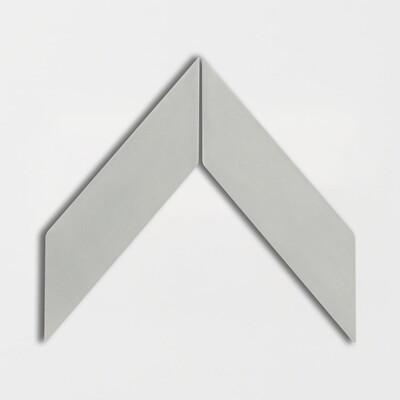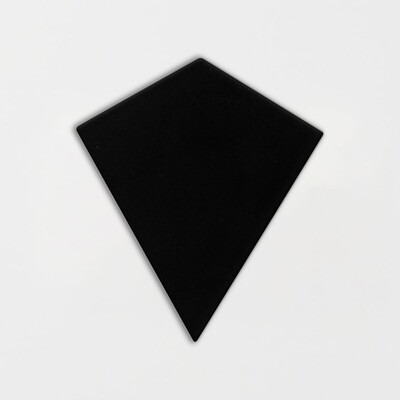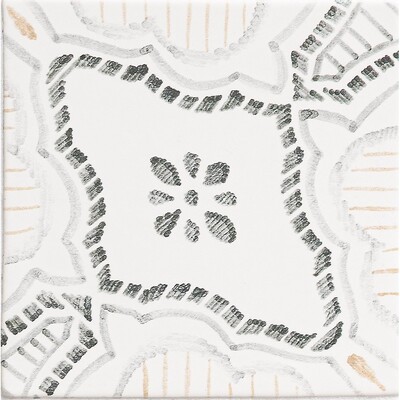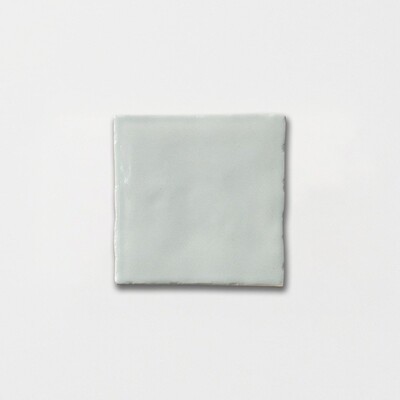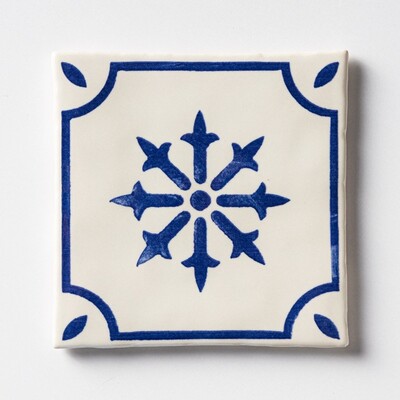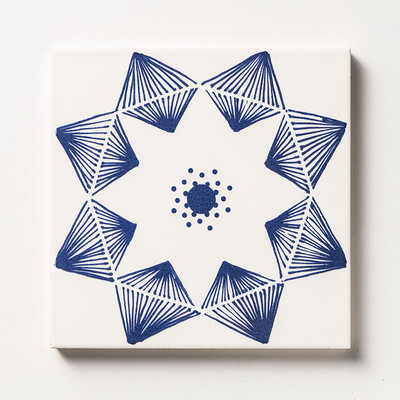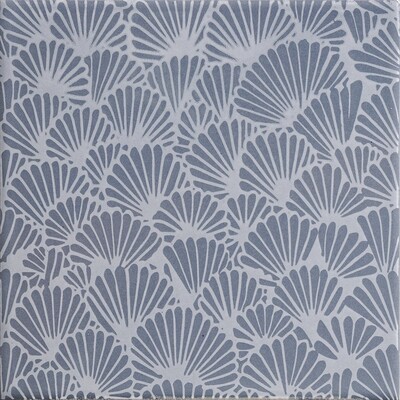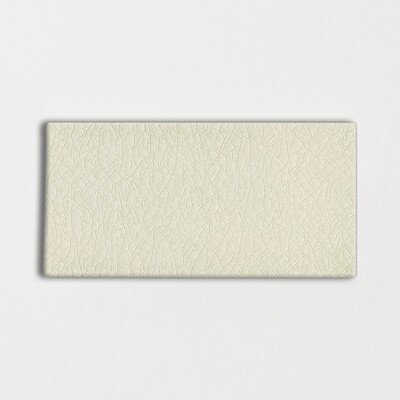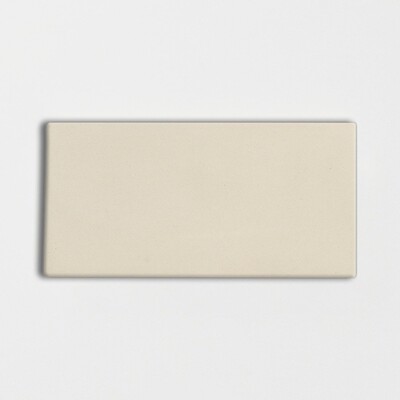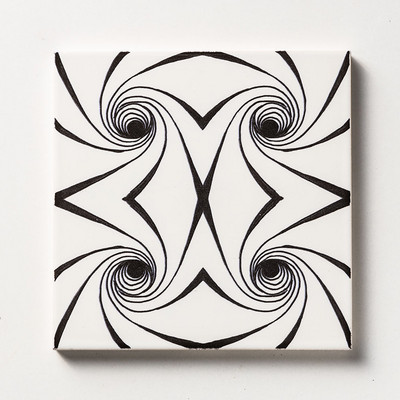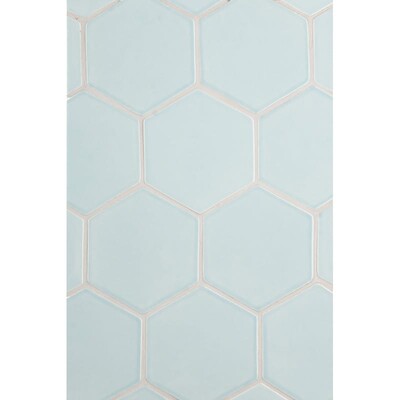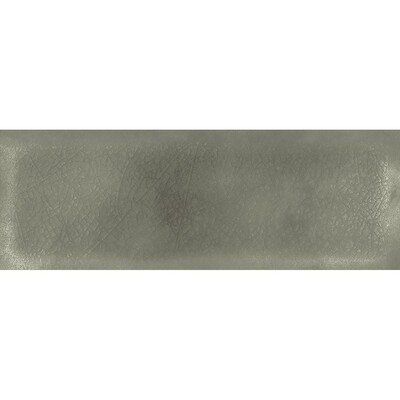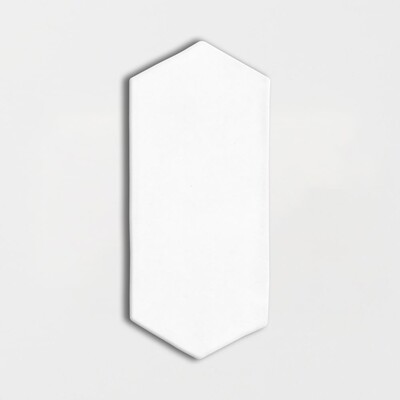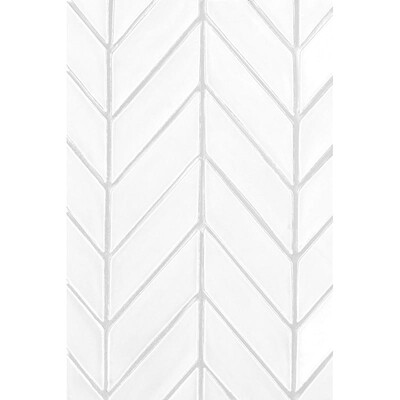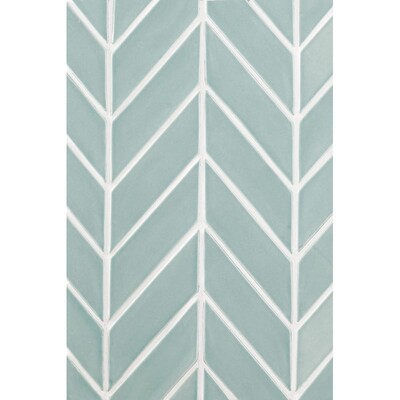1–20 of 1302 results
No. Ceramic tiles are very very easy to clean and maintain. You can easily clean ceramic wall tiles with a soft cloth and clean warm water. If done regularly, the process takes only seconds. Ceramic floor tiles are also easy to clean. They usually require a weekly sweep and mopping to remain show-worthy.
Yes. Ceramic tile is a great choice for the bathroom and not just bathroom flooring. Ceramic bathroom wall tile and ceramic shower wall tile are both unique ways to showcase their beauty. Ceramic bathroom tiles are impervious to water, and they are highly stain resistant. These qualities make ceramic tile bathrooms great for families. Ceramic tiles are a great way to instantly upgrade your bathroom and make it the perfect place for spa treatments, hair care, and daily essential use.
They can be. Ceramic flooring is great for its easy maintenance and water resistance, but these features can also make them slippery when wet. Many homeowners with ceramic tile flooring like to use mats and treads, or area rugs. Also, be careful to clean up spills immediately to prevent slips. We suggest choosing matte ceramic tile flooring since it's less slippery than glazed ceramic tiles.
Even after years of daily traffic, ceramic tile can look like new. Ceramic tile is scratch-proof, so there’s no worry about seeing signs of wear on your flooring. The superior scratch resistance of ceramic tile is hard to beat. Perhaps that’s why to classic black and white ceramic tile combination has been a long-time favorite of homeowners.
Ceramic tile has a reputation for being long-lasting. Properly installed ceramic tile can last over well over 20 years. In some cases, glazed ceramics they can last up to 50 years with proper maintenance. Therefore, ceramic tiles are a worthwhile, long-term investment.
Ceramic tile is not 100% waterproof due to its porous surface. However, it is very dense and has an incredibly low water absorption rate compared to other tile materials. So, it's more accurate to say that ceramic tile is water resistant. A glazed ceramic tile is a good choice for high-moisture areas like bathrooms since the glaze helps protect the surface of the tile.
Yes. Ceramic tile flooring is very popular with homeowners – even in overlooked spaces like mudrooms. Ceramic tile floors are hardwearing, which means you can feel confident walking, dancing, cooking, and making other memories. Additionally, ceramic tile flooring is beautiful. If you want floors that will upgrade the visual appeal of your home ceramic flooring is a great choice.
Although ceramic tile flooring is a great choice for homes, we suggest using a tile that's even more hardwearing and durable for heavy-traffic commercial flooring installations –– like porcelain.
Ceramic tile is very durable and able to hold up in very hot and even wet areas. However, ceramic tile is porous. Porous materials have tiny holes located along the surface which can hold tiny amounts of liquid. Therefore, water exposure can damage the tile over time. We suggest using a glossy ceramic tile in wet areas to protect the surface of the tile. Additionally, you should clean up any spills immediately. Ceramic tiles can last for years under normal usage, as long as spills and drips are not left to sit on the tile for long periods.
There are many amazing benefits to having ceramic tiles in your home. Ceramic tile is affordable when compared to materials like marble and granite tile. Additionally, since it's dense and durable, it is very low maintenance. Ceramic tile comes in a wide array of shapes, sizes, and colors. You can also choose from patterned ceramics and ceramic tiles in several stylish finishes.
Another rarely known fact about ceramic tile is its fire resistance, which makes it great in areas where heated tools or cookware are frequently used. Ceramic tile is also resistant to scratches – even light shades like white ceramic tile or blue ceramic tile will last a long time.
As ceramic tiles are incredibly durable and versatile, they can be installed in many rooms and areas around a home or business. Popular installations include ceramic tile flooring in bathrooms and ceramic tile backsplashes in kitchens. A ceramic tile accent wall in either a home or business is always a striking choice.
We do not recommend ceramic tiles for high-traffic commercial flooring installations, as they are not as durable as other materials like porcelain or granite. Nevertheless, there are many unique places you can apply ceramic tiles, so feel free to let your creativity shine with this tile.
Ceramic tiles are essentially a mixture of clays that are blended and then heated at extremely high temperatures until they solidify. The resulting tiles can be finished or treated with a glazed coating, or left untreated for a more natural, or matte appearance.
Ceramic is perfect for interior walls and floors. These tiles can be chosen for residential and commercial projects. The most common applications are hotel and condo bathroom ceramic flooring and kitchen ceramic backsplashes.
Please check the product specifications under the product pages to get better info based on product-specific areas.
Ceramics have a rich legacy in design, art, and architecture that spans thousands of years. While ancient Mesopotamian temples are the earliest-recorded sites of ceramic tiles, this art form has appeared throughout history, from Ottoman palaces decked with Turkish Iznik tiles to Baroque interiors lined with Spanish Azulejo tiles.
Ceramic wall tiles are a versatile and popular choice for interior walls. They come in a variety of colors, sizes, and finishes, making them suitable for various design styles. These tiles are known for their durability, ease of maintenance, and resistance to moisture, making them ideal for kitchens and bathrooms. Ceramic wall tiles can be glazed or unglazed, with glazed options providing a shiny, protective layer that enhances their appearance and resistance to stains.
A ceramic tile backsplash is a functional and decorative element installed on the wall behind a countertop, primarily in kitchens and bathrooms. It protects the wall from water, grease, and other kitchen splatters while adding an aesthetic touch to the space. Ceramic tile backsplashes are available in a wide range of colors, patterns, and textures, allowing homeowners to create a customized look that complements their overall design scheme. They are easy to clean and maintain, making them a practical choice for busy areas.
Ceramic tiles for shower walls are specifically designed to withstand high moisture levels and frequent exposure to water. These tiles are often glazed to provide a waterproof barrier, preventing water from seeping through and causing damage to the underlying structure. Ceramic shower wall tiles come in various sizes, from small mosaics to large formats, and can be arranged in different patterns to create a visually appealing and functional shower space. They are also resistant to mold and mildew, ensuring a hygienic environment.
Ceramic bathroom wall tiles are used to cover the walls of bathrooms, offering both aesthetic appeal and practical benefits. These tiles are highly resistant to water, stains, and humidity, making them perfect for the wet environment of a bathroom. Available in numerous colors, patterns, and finishes, ceramic bathroom wall tiles can be used to create a variety of looks, from classic to contemporary. Their smooth surface makes them easy to clean, helping to maintain a fresh and hygienic bathroom space.
We recommend ceramic floor tiles for light residential bathroom floors. Typically, most people walk barefoot on their bathroom floors and it is acceptable to use good-quality ceramic tiles for bathroom floors.
Of course, this depends on the usage and expectations of wear and tear of the customer. If you expect perfectly scratch-free floor tiles in your bathroom floor, you should use a floor-rated ceramic tile which is hard to find these days. For this reason, most people use porcelain tiles.
White ceramic tiles are a timeless and versatile option, offering a clean and bright look to any space. They can be used in a variety of settings, from minimalist modern designs to classic traditional interiors. White tiles help to make spaces appear larger and more open, reflecting light effectively. They can be paired with different grout colors to create subtle or bold contrasts.
Black ceramic tiles add a touch of elegance and sophistication to any room. They are often used to create a dramatic effect or to complement a contemporary design aesthetic. Black tiles can be used as accents or for entire walls and floors, and they pair well with metallic finishes and bold colors. They require regular cleaning to maintain their sleek appearance but can make a striking statement.
Blue ceramic tiles are popular for their calming and serene qualities. They come in various shades, from light sky blue to deep navy, and can be used to create a soothing atmosphere in bathrooms, kitchens, and living areas.
Blue tiles can be used in mosaic patterns, as feature walls, or for entire surfaces. They are versatile and can be combined with neutral tones or contrasting colors for a vibrant look. Blue Delft tiles are the oldest and most popular option as well as Portuguese Azulejos, which literally means the blue ones. Iznik tiles are also well known over the centuries.
Gray ceramic tiles are a popular choice for their neutrality and modern appeal. They provide a sophisticated and understated look that works well in both residential and commercial spaces. Available in a range of shades from light to dark, gray tiles can be used to create a monochromatic scheme or as a base for more colorful accents. They are easy to coordinate with various design styles and materials.
Green ceramic tiles bring a fresh and natural feel to any space. They are available in various shades, from soft mint green to deep forest green, and can be used to create a tranquil and earthy ambiance. Green tiles are ideal for bathrooms and kitchens, adding a touch of nature to the decor.
They can be used in combination with other natural materials like wood and stone for a harmonious look. Pecchioli Tile in Firenze makes some of the most beautiful green ceramic tiles in vibrant greens and emerald tile colors.
3x6 Ceramic Tile is the most popular ceramic tile and this is also known as the subway tile. Subway tile refers to a type of rectangular tile that traditionally measures 3 x 6 inches, resembling the tiles used in early 20th-century New York City subway stations. Known for its clean lines and classic appearance, subway tile has become a popular choice for both modern and traditional interior designs.
Shape and Size: The most common size is 3 x 6 inches, but subway tiles can also be found in other sizes, such as 2 x 4 inches or larger formats like 4 x 8 inches.
Material: Subway tiles are typically made from ceramic or porcelain, but they can also be found in glass, marble, and other materials.
Finish: These tiles often have a glossy finish, but matte options are also available. Glossy tiles are particularly popular for their reflective properties and ease of cleaning.
Color: While the classic subway tile is white, they are available in a wide range of colors, allowing for customization to fit any decor style.
Installation Patterns: The most traditional installation pattern is the offset or brick pattern, where each tile is offset by half the width of the tile below it. Other patterns, such as vertical stacking, herringbone, or straight stacking, can be used to create different looks.
Backsplashes: Subway tiles are a popular choice for kitchen and bathroom backsplashes due to their clean appearance and easy maintenance.
Shower Walls: Their water-resistant properties make subway tiles ideal for shower walls, providing a sleek and hygienic surface.
Accent Walls: Subway tiles can be used to create an accent wall in any room, adding texture and interest.
Flooring: While less common, subway tiles can also be used on floors, especially in smaller formats or in combination with other tile types to create unique patterns.
Timeless Appeal: The classic look of subway tiles ensures they never go out of style.
Versatility: Available in a variety of colors, sizes, and materials, subway tiles can fit into virtually any design scheme.
Durability: Subway tiles, especially those made from ceramic or porcelain, are durable and easy to maintain.
Ease of Installation: Their standard size and shape make subway tiles relatively easy to install, even for DIY projects.
Overall, subway tiles offer a versatile and enduring design solution for a wide range of interior applications.
4 x 4 ceramic tiles are a classic choice for a variety of applications. Their small size makes them ideal for intricate patterns and detailed designs, often used in backsplashes, shower walls, and accent borders. These tiles can be arranged in traditional square patterns or more complex layouts like herringbone or checkerboard.
The 4 x 4 size allows for flexibility in design and can create a visually appealing, textured look. This is the second most popular ceramic tile size. In fact, the 4 1/4" tile by American Olean was the industry standard for a long time.
6 x 6 ceramic tiles offer a balance between the small, detailed look of 4 x 4 tiles and the larger, more expansive appearance of 12 x 12 tiles. They are versatile and can be used on walls, floors, and backsplashes. This size is particularly popular for kitchen and bathroom walls, providing a uniform and cohesive appearance without overwhelming the space. The 6 x 6 tiles can be laid in various patterns, such as straight, diagonal, or staggered, to add visual interest.
12 x 12 ceramic tiles are a popular choice for flooring and large wall areas due to their substantial size. They cover more area with fewer grout lines, creating a seamless and spacious look. These tiles are often used in living rooms, kitchens, and bathrooms, providing a modern and clean aesthetic. The larger size makes them quicker to install and easier to maintain, as there are fewer grout lines to clean. They can be arranged in straightforward or diagonal patterns to suit different design preferences.
Versatility in Design, durability, and longevity as well as ease of maintenance. Overall, ceramic tiles are a practical and stylish choice for a wide range of applications, combining aesthetic appeal with functional benefits.
Remember, ceramic tile is more than just a material; it's an experience. Visit Country Floors today and discover the magic for yourself. If you'd like to see the ceramic tiles in person, visit our showrooms; New York Tile Store, Los Angeles Tile Store, and San Francisco Tile Store to have excellent customer service by our experienced consultants.
